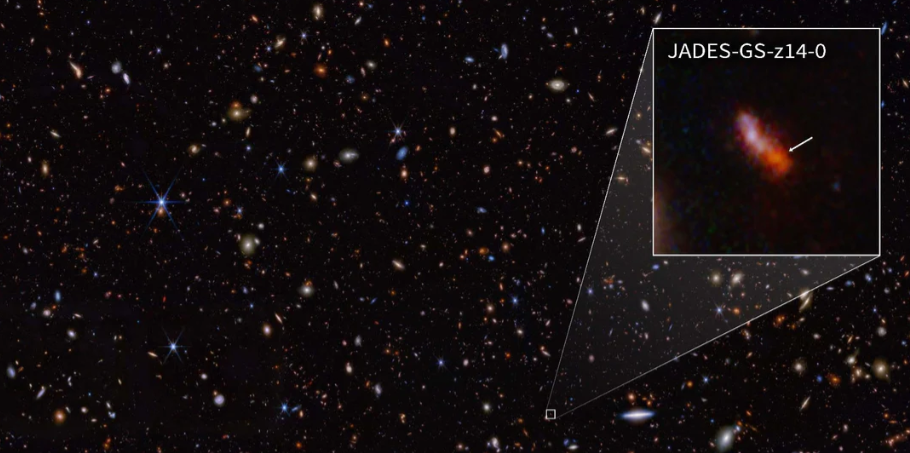Discovery of JADES-GS-z14-0: Unveiling the Earliest Giant Galaxy (GS Paper 2, Science & Tech)

Introduction
- The recent discovery of the JADES-GS-z14-0 galaxy by the James Webb Space Telescope (JWST) marks a significant breakthrough in our understanding of the early universe.
- This discovery sheds light on a pivotal period just 290 million years after the Big Bang, known as the cosmic dawn.
Characteristics of JADES-GS-z14-0
- JADES-GS-z14-0 spans approximately 1,700 light-years and boasts a mass equivalent to 500 million sun-sized stars.
- Remarkably, this galaxy is producing stars at a rate of 20 per year, defying expectations for the early universe.
Implications of the Discovery
- The presence of such a large and luminous galaxy challenges existing theories of galaxy formation and evolution.
- The discovery of JADES-GS-z14-0 adds complexity to our understanding of the cosmic dawn and prompts questions about the mechanisms driving star formation in the early universe.
Theories Behind the Early Galaxy Brightness
- Scientists are exploring various theories to explain the brightness of JADES-GS-z14-0.
- While supermassive black holes have been ruled out, other possibilities include an abundance of stars or stars inherently brighter than later generations.
Significance of JWST
- The James Webb Space Telescope, launched in December 2021, has played a crucial role in this groundbreaking discovery.
- Positioned 1.5 million kilometers from Earth, JWST's advanced capabilities for observing infrared light enable unprecedented insights into distant galaxies and the early universe.
Conclusion
- The discovery of JADES-GS-z14-0 underscores the importance of continued exploration with instruments like the James Webb Space Telescope.
- By pushing the boundaries of astronomical research, JWST offers unparalleled opportunities to unravel the mysteries of the cosmos and deepen our understanding of the universe's origins.


